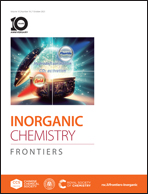Sustainable ammonia synthesis from air by the integration of plasma and electrocatalysis techniques†
Abstract
In this work, we propose a strategy to realize indirect ammonia (NH3) harvesting from air by the integration of the non-thermal plasma (NTP) technique and electrocatalysis technique, which can activate air to form NOx− and further electrochemically reduce NOx− to NH3, respectively. To achieve high NOx− yields, a self-assembled tandem plasma system was constructed, in which the gliding arc discharge plus microwave discharge with pulse modulation tandem mode (GAD + MD–PM) was found to be preferable as it attained the largest NO2− yield of 8670.19 μg mL−1 in a 1.5 M KOH absorption solution. Then, the plasma-treated KOH solution was directly used as the electrolyte for the subsequent electrochemical NO2− reduction reaction (eNO2−RR). The PtCu alloy with a 3D hexapod structure (PtCu HPs) was carefully designed as an effective eNO2−RR electrocatalyst, and it exhibited a remarkable NH3 yield rate of 166.02 μg h−1 mg−1 and faradaic efficiency of 84.37% at 0 V (vs. RHE), which is almost 14.72 and 30.05 times higher than those of the PtCu nanoparticles (PtCu NPs) and Cu nanoparticles (Cu NPs), respectively. Such performance is mainly contributed by the enhanced intrinsic activity induced by the synergistic effect of the PtCu alloy and the increased number of accessible active sites due to the unique 3D hexapod structure. This work provides a potential strategy for sustainable nitrogen fixation toward NH3 production by combining various advanced techniques.



 Please wait while we load your content...
Please wait while we load your content...